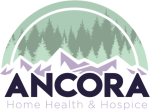
03 Sep Tips to Stand Taller, Sit Straighter and Live Better
Importance of Maintaining Good Posture
Good posture is good for your body and your brain
Being able to stay at home and remain independent is a daily struggle for many older adults. As we age we tend to lose our flexibility, our connective tissue tightens, and we have prolonged reaction times. Problems with vision, including depth perception, all increase the likelihood of falling.
However, the older we get, the more the ramifications of a fall escalate, including being the leading cause of injury deaths in older adults and the most common cause of non-fatal injuries and hospital admissions.
Improving posture and balance helps strengthen weak muscle groups in the back, core, hips and legs. This improves mobility, which limits the fall risks. Maintaining upright posture is vital for daily living and function.
For instance, it can seem that older adults are shuffling instead of walking. This is actually a way to compensate for lack of balance and poor posture. They take shorter strides, have a wider gait, and tend to look at the floor to try to avoid tripping.
Working on posture, such as sitting up straight in a chair and holding abs in can strengthen key muscles groups helping to create a more normal walking gait. Improving static balance, which is the ability to control postural sway while standing, is key to preventing falls.
We naturally move a lot. When you stand still you actually aren’t still. Your head moves and your body moves with it to keep in line with the head. As we age it is important to train our brains to quickly activate the right muscles to anticipate and respond to changes in our environment such as stepping up on a curb or into a bath tub.
The anatomy of the slouch:
• Our head juts forward and leans down. This effects anterior neck muscles, over-stretching the trapezius, splenius, and longissimus. This keeps our head out of alignment with the rest of our body and actually hinders communication lines between our brains and body. Imagine instead of taking a straight route up, our nerve signals have to zig-zag their way
• Our sternum and chest pull inward, compressing our diaphragm. So, our breathing becomes more labored.
• Our shoulders and upper back are rounded, causing extra stress on our neck, back and shoulders. Headaches and tension in our upper body are often direct results of bad posture.
A great way to find your good posture place is by standing in front of the mirror with your hands to your sides. If your thumbs are facing forward, you’re standing straight. If, however, your palms face backward, you’ve slipped into the slouch.
Steps to correct your posture:
• We’re are a society of sitters! Set a timer on your phone to stand every 30 to 40 minutes.
• Sit straight. This means your feet should be on the floor. If they don’t reach, put them on a little stool. Your knees should be hip level or slightly lower. A gap should be between the chair and your knees. While working, your arms should be parallel to the floor, shoulders relaxed, and you should be looking straight forward.
• Avoid couch and bedroom laptop time. And don’t talk with your phone cradled between your shoulder and chin. Hold the phone to your ear.
• Strengthen your core. Posture – good or bad – is a direct result of core strength or weakness. Pilates and yoga are two of the most popular core-strengtheners.
• Sit with your hands to your sides and stand up straight. Sit back down again.
• Stretch. Roll your shoulders back. Arch over a yoga ball to stretch your abdominals, the fronts of your thighs and chest muscles, all of which get tight when sitting in a chair.
• Sleep on your back with a pillow under your knees or your side, with a pillow between your knees. No stomach sleeping!
Poor posture doesn’t happen overnight, and it won’t be corrected overnight. But with a few changes in the way you work, with a few exercises every evening, you’ll notice a difference. Be present and aware of how you sit and stand and work toward better posture and better health.

No Comments